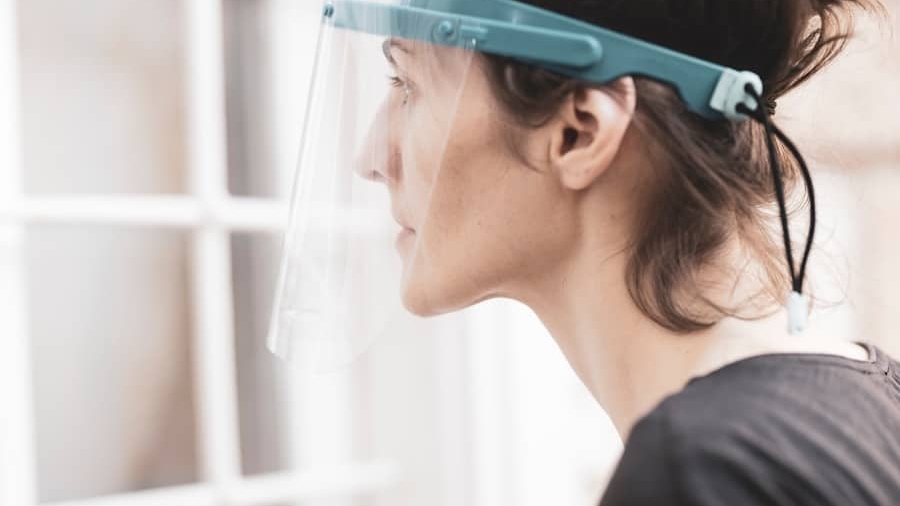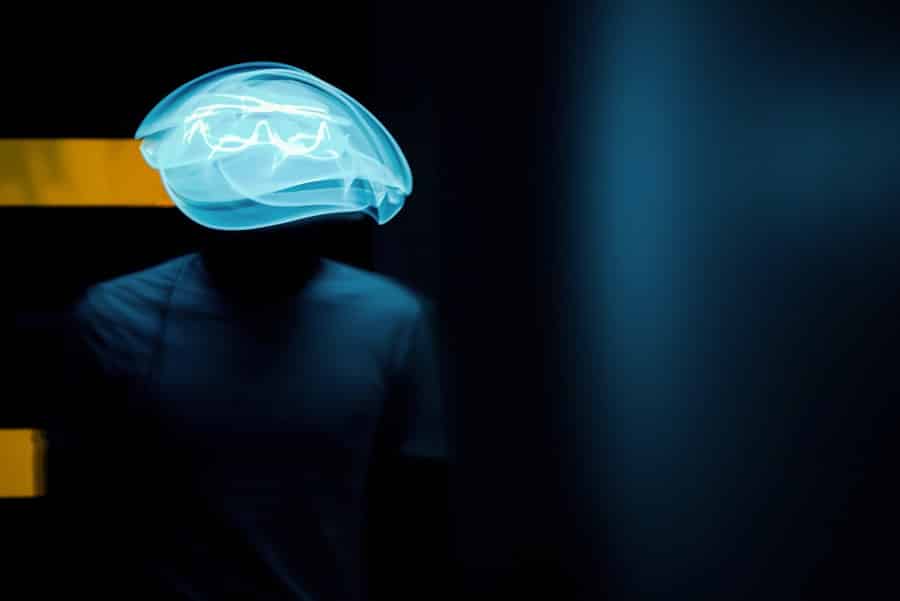Wearable electroencephalograms (EEGs) represent a significant advancement in the field of neurology, providing a means to monitor brain activity in a more accessible and user-friendly manner. Traditional EEGs have long been a staple in diagnosing various neurological conditions, but they often require patients to visit specialized clinics or hospitals, where they are connected to bulky equipment for extended periods. In contrast, wearable EEG devices are designed to be lightweight, portable, and user-friendly, allowing for continuous monitoring of brain activity in everyday settings.
This shift not only enhances patient comfort but also opens up new avenues for data collection and analysis. The technology behind wearable EEGs has evolved rapidly, driven by advancements in materials science, miniaturization of electronic components, and improvements in signal processing algorithms. These devices can now be integrated into headbands, caps, or even clothing, making them less intrusive and more appealing to users.
As a result, they have the potential to revolutionize how neurological conditions are diagnosed and monitored, providing real-time insights into brain function that were previously unattainable outside of clinical environments. The growing interest in wearable technology also reflects a broader trend towards personalized medicine, where patient data can be continuously collected and analyzed to tailor treatments more effectively.
Key Takeaways
- Wearable EEGs are portable devices that can monitor brain activity outside of traditional clinical settings.
- Advantages of wearable EEGs include their ability to provide continuous monitoring, real-time data collection, and increased patient comfort.
- Challenges and limitations of wearable EEGs include potential signal interference, limited spatial resolution, and the need for further validation in clinical settings.
- Applications of wearable EEGs in diagnosing neurological conditions include seizure detection, monitoring of brain injuries, and assessing cognitive function.
- Wearable EEGs offer the advantage of convenience and mobility compared to traditional EEGs, but may have limitations in terms of signal quality and accuracy.
- Future developments in wearable EEG technology may include improved signal processing algorithms, miniaturization of devices, and integration with other health monitoring systems.
- Ethical and privacy concerns with wearable EEGs include data security, consent for data usage, and potential misuse of sensitive brain activity information.
- The use of wearable EEGs has the potential to revolutionize neurological diagnosis, but careful consideration of ethical and privacy implications is necessary for their responsible implementation.
Advantages of Wearable EEGs in Diagnosing Neurological Conditions
Comprehensive Understanding of Brain Function
Traditional EEGs typically capture data during short sessions, which may not provide a comprehensive view of a patient’s neurological status. In contrast, wearable devices can record brain activity during daily activities, sleep, or even exercise, offering a more holistic understanding of how various factors influence brain function.
Early Diagnosis and Intervention
This continuous data stream can be invaluable for diagnosing conditions such as epilepsy, where seizures may occur unpredictably and are often missed during brief clinical assessments. Moreover, the accessibility of wearable EEGs can lead to earlier diagnosis and intervention for neurological disorders. Patients can use these devices at home, reducing the need for frequent hospital visits and allowing for more timely data collection.
Empowering Patients
For instance, individuals with suspected sleep disorders can wear EEG devices overnight to monitor their brain activity during sleep cycles. This real-time data can help clinicians identify abnormalities that may indicate conditions like sleep apnea or narcolepsy, leading to quicker and more effective treatment plans. The convenience of these devices also encourages patients to engage more actively in their health management, fostering a sense of empowerment and ownership over their neurological health.
Challenges and Limitations of Wearable EEGs
Despite their numerous advantages, wearable EEGs face several challenges and limitations that must be addressed for widespread adoption in clinical practice. One significant concern is the accuracy and reliability of the data collected by these devices. While traditional EEGs are performed in controlled environments with trained professionals interpreting the results, wearable devices may struggle with noise interference from external factors or improper placement on the head.
This can lead to artifacts in the data that may obscure meaningful signals, potentially resulting in misdiagnosis or missed opportunities for intervention. Another challenge lies in the standardization of wearable EEG technology. With various manufacturers producing different devices with unique features and specifications, there is a lack of consensus on best practices for data collection and interpretation.
This variability can complicate clinical studies and hinder the ability to compare results across different populations or settings. Additionally, regulatory hurdles may slow the integration of these devices into mainstream healthcare systems, as they must meet stringent safety and efficacy standards before being approved for clinical use.
Applications of Wearable EEGs in Diagnosing Neurological Conditions
Wearable EEGs have a wide range of applications in diagnosing neurological conditions beyond epilepsy and sleep disorders. For instance, they can be instrumental in monitoring patients with neurodegenerative diseases such as Alzheimer’s or Parkinson’s disease. By tracking changes in brain activity over time, clinicians can gain insights into disease progression and the effectiveness of therapeutic interventions.
This longitudinal data can help identify subtle cognitive changes that may not be apparent during routine clinical evaluations. Additionally, wearable EEGs can play a crucial role in assessing mental health conditions such as anxiety and depression. Research has shown that specific patterns of brain activity are associated with these disorders, and wearable devices can help monitor these patterns in real-time.
For example, individuals experiencing heightened anxiety may exhibit distinct changes in their brain wave patterns that can be captured by wearable EEGs during stressful situations. This information can be invaluable for tailoring treatment approaches, such as cognitive-behavioral therapy or medication management.
Comparison of Wearable EEGs with Traditional EEGs
When comparing wearable EEGs to traditional EEGs, several key differences emerge that highlight the strengths and weaknesses of each approach. Traditional EEGs are typically conducted in clinical settings where patients are connected to multiple electrodes placed on the scalp using a conductive gel. This setup allows for high-fidelity recordings of brain activity but requires significant time and resources from both patients and healthcare providers.
The controlled environment also minimizes external noise interference, resulting in clearer signals that are easier to interpret. In contrast, wearable EEGs prioritize convenience and accessibility at the potential cost of signal quality. While they offer the advantage of continuous monitoring in naturalistic settings, the data collected may be subject to greater variability due to factors such as movement artifacts or improper electrode placement.
However, advancements in signal processing techniques are helping to mitigate these issues by improving the ability to filter out noise and enhance the quality of recorded signals. Ultimately, the choice between wearable and traditional EEGs may depend on the specific clinical context and the goals of monitoring brain activity.
Future Developments and Innovations in Wearable EEG Technology
Integrating Artificial Intelligence and Machine Learning
One promising area of research involves integrating artificial intelligence (AI) and machine learning algorithms into wearable EEG devices.
By leveraging AI capabilities, clinicians could receive real-time alerts about significant changes in brain activity that warrant further investigation.
Improving Comfort and Aesthetics
Another avenue for innovation lies in improving the comfort and aesthetics of wearable EEG devices. As technology advances, manufacturers are exploring new materials and designs that make these devices more appealing to users while ensuring optimal performance. For example, flexible sensors that conform to the shape of the head could enhance signal quality while providing a more comfortable fit for users during extended wear.
Enhancing Clinical Utility
Additionally, incorporating features such as wireless connectivity and smartphone integration could facilitate seamless data sharing between patients and healthcare providers, further enhancing the utility of wearable EEGs in clinical practice.
Ethical and Privacy Concerns with Wearable EEGs
As with any technology that collects sensitive health data, ethical and privacy concerns surrounding wearable EEGs must be carefully considered. The continuous monitoring capabilities of these devices raise questions about data ownership and consent. Patients may be unaware of how their brain activity data is being used or shared with third parties, leading to potential breaches of privacy.
Ensuring that users have clear information about data collection practices and their rights regarding their personal information is essential for fostering trust in this technology. Moreover, there is a risk that reliance on wearable EEGs could lead to overdiagnosis or misinterpretation of data due to the sheer volume of information generated by these devices.
Establishing guidelines for ethical use and interpretation of wearable EEG data will be crucial as this technology becomes more integrated into routine clinical practice.
Conclusion and Implications for the Future of Neurological Diagnosis
The emergence of wearable EEG technology holds significant promise for transforming the landscape of neurological diagnosis and monitoring. By enabling continuous assessment of brain activity outside traditional clinical settings, these devices offer new opportunities for early detection and personalized treatment strategies for various neurological conditions. However, challenges related to data accuracy, standardization, and ethical considerations must be addressed to fully realize their potential.
As research continues to advance in this field, it is likely that we will see further innovations that enhance the functionality and usability of wearable EEGs while addressing privacy concerns. The integration of AI-driven analytics could revolutionize how clinicians interpret brain activity data, leading to more informed decision-making in patient care. Ultimately, the successful implementation of wearable EEG technology has the potential to improve outcomes for individuals with neurological disorders while fostering a more proactive approach to health management in an increasingly digital world.
A related article discussing the new world of possibilities with the Samsung Galaxy Chromebook 4 can be found at enicomp.com.
FAQs
What is a wearable EEG?
A wearable EEG (electroencephalogram) is a portable device that can be worn on the head to monitor and record brain activity. It is non-invasive and can be used outside of a clinical setting, allowing for continuous monitoring of brain waves in real-world environments.
How does a wearable EEG help in diagnosing neurological conditions?
Wearable EEGs can provide valuable data for diagnosing neurological conditions such as epilepsy, sleep disorders, and other brain-related conditions. The device records brain wave patterns, which can be analyzed by healthcare professionals to detect abnormalities and make accurate diagnoses.
What are the advantages of using wearable EEGs for diagnosing neurological conditions?
Wearable EEGs offer several advantages, including the ability to monitor brain activity over an extended period of time, the convenience of at-home monitoring, and the potential for early detection of neurological conditions. This can lead to more accurate diagnoses and personalized treatment plans for patients.
Are there any limitations to using wearable EEGs for diagnosing neurological conditions?
While wearable EEGs are a valuable tool for diagnosing neurological conditions, they do have limitations. These devices may not be as sensitive or accurate as traditional EEGs performed in a clinical setting, and the interpretation of the data requires specialized expertise. Additionally, the use of wearable EEGs may not be suitable for all patients or all types of neurological conditions.
What is the future potential of wearable EEGs in diagnosing neurological conditions?
The future potential of wearable EEGs in diagnosing neurological conditions is promising. As technology continues to advance, these devices may become more sophisticated, accurate, and user-friendly. This could lead to earlier and more precise diagnoses of neurological conditions, ultimately improving patient outcomes.



